

A neat row of heavy red rainjackets hung inside the Tasmanian ranger's office.
"Here is the forecast for Mt Anne. It is the closest we have to where you are going." The ranger briefly smiled as she passed us the printout.
"You will have at least one day out of five without heavy rain."
"Have you been down towards the Western Arthurs recently?"
"No. I have been down in that direction on a chopper in summer. You must really like mud."

The meandering Gordon River Road is the lone opening to Tasmania's south west. Often overlooked for the tourist circuit around Tasmania, this region is home to glaciated mountains, pristine lichen covered forest and freezing tan coloured streams beneath Australia's tallest trees.
Earlier that day, our group of three hikers from Melbourne had resupplied in New Norfolk, a historic village on the poplar lined Derwent Valley. Apple orchards and vineyards slowly blended into a bushy valley and the road countless times crossed the narrow gauge Derwent Valley Railway, which once serviced the booming logging industry as far as the Florintine valley. The frontier towns like Maydena now attract adventure oriented holiday makers with attractions like formidable gravity mountain biking trails and hiking trails.
Tasmania comes alive in autumn. Deciduous trees scattered the bottom of the valley form a kaleidoscope of crisp yellow and oranges against muted notes of native greens. With the fresh mountain air, and afternoon shadows lengthening, we turned onto the unsealed Scotts Peak Dam Road, namesake for a peak that is now a prominent island in Lake Pedder.
The crackle of a pre-hike campfire was frequently interupted by loud rustles in the bushes. Our meal of steak with mushroom sauce was equally appreciated by us as the family of extremely obese brushtail possums at Huon Valley Campground. When they stood up to grab food their profile resembled stout Matryoshka Dolls.

A deep mud hole had telling signs. The surface would be very still, with many poorly placed tracks around it.
With our legs only partially covered in leaches the meandering Port Davey Track split and led to a steep ascent. The Western Arthurs rise abruptly from the plains below. The noteworthy ridges of the Western Arthurs range are named after the Greek Alphabet. As we ascended the Alpha Moraine fog and bad weather hit. While the original plan was to progress further, we set camp in darkness not long after reaching the top of ridge.




At first a well defined path with level stepping stones, the Western Arthurs Traverse Track deteriorates towards Lake Oberon into steep eroded gullies and become more challenging still close to High Moor Campsite. It is often said that in the tougher parts of the track moving at 500m per hour is not a bad effort.
The heavy fog and rain did not clear until the third day. uckily for us, what was expected to be a short opening of good weather extended further and some of the appeal of this region came to shine. The craggy profile of the range extended to the iconic Federation Peak, often considered to be Australia's only true mountain by mountaineers.

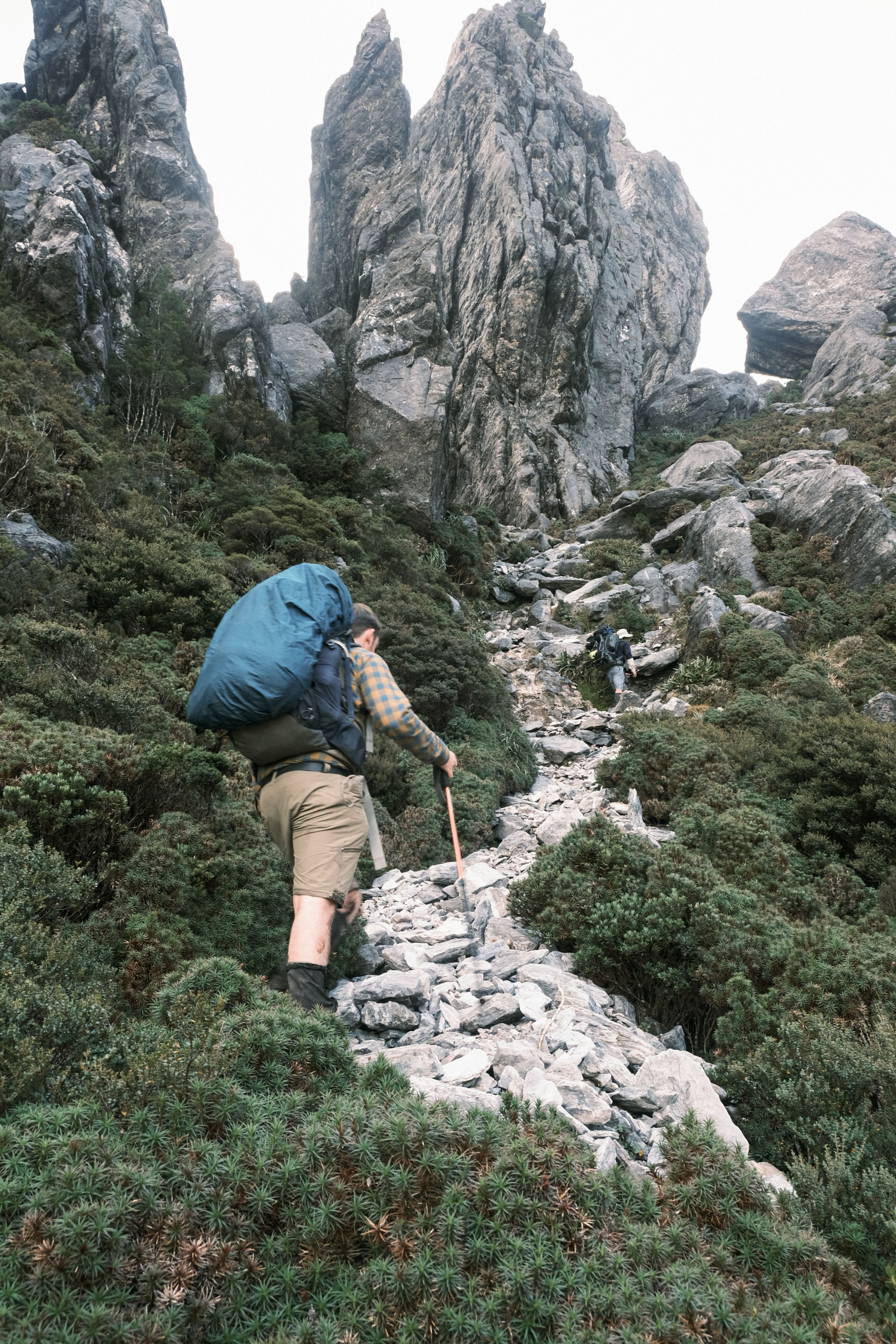
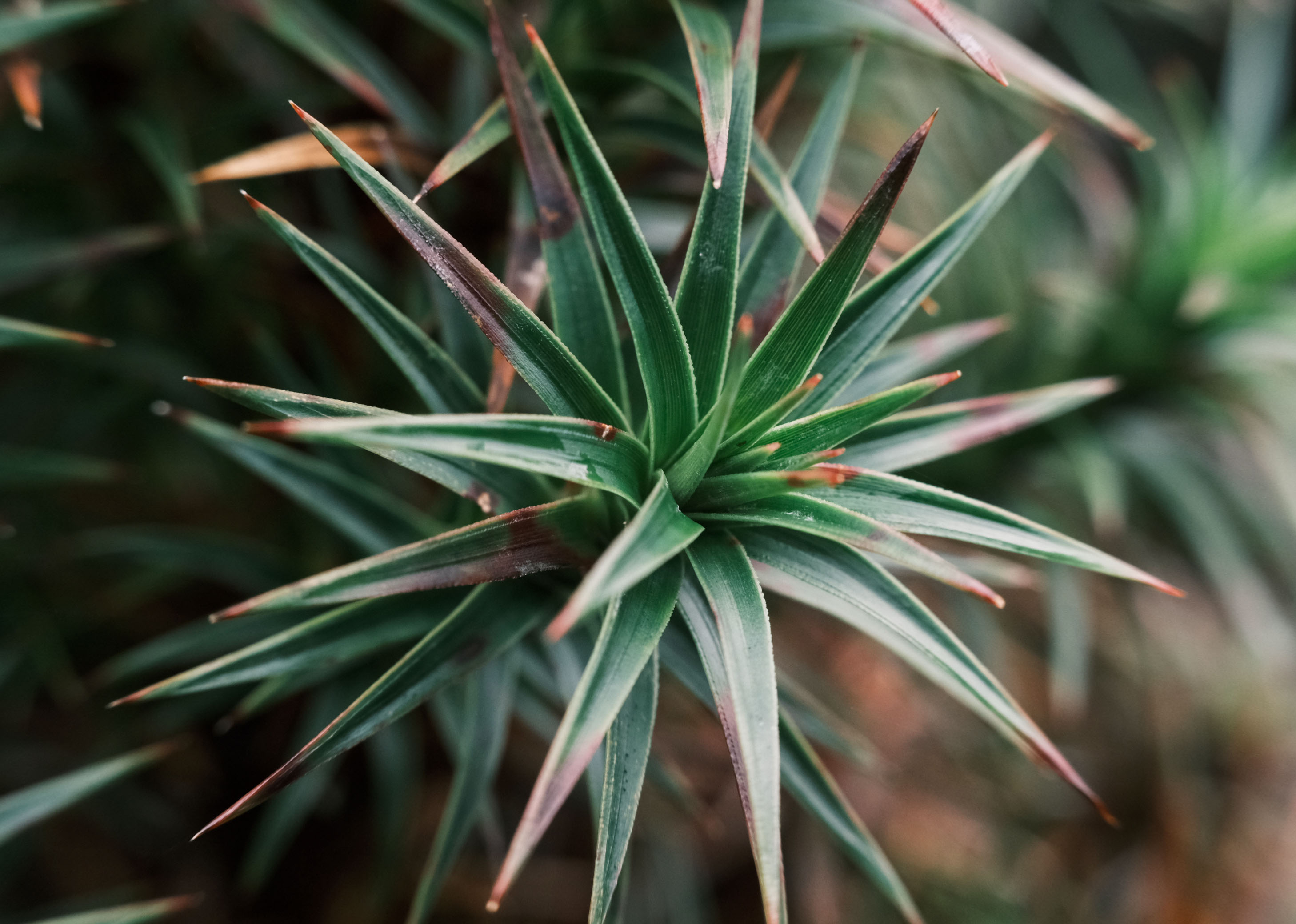
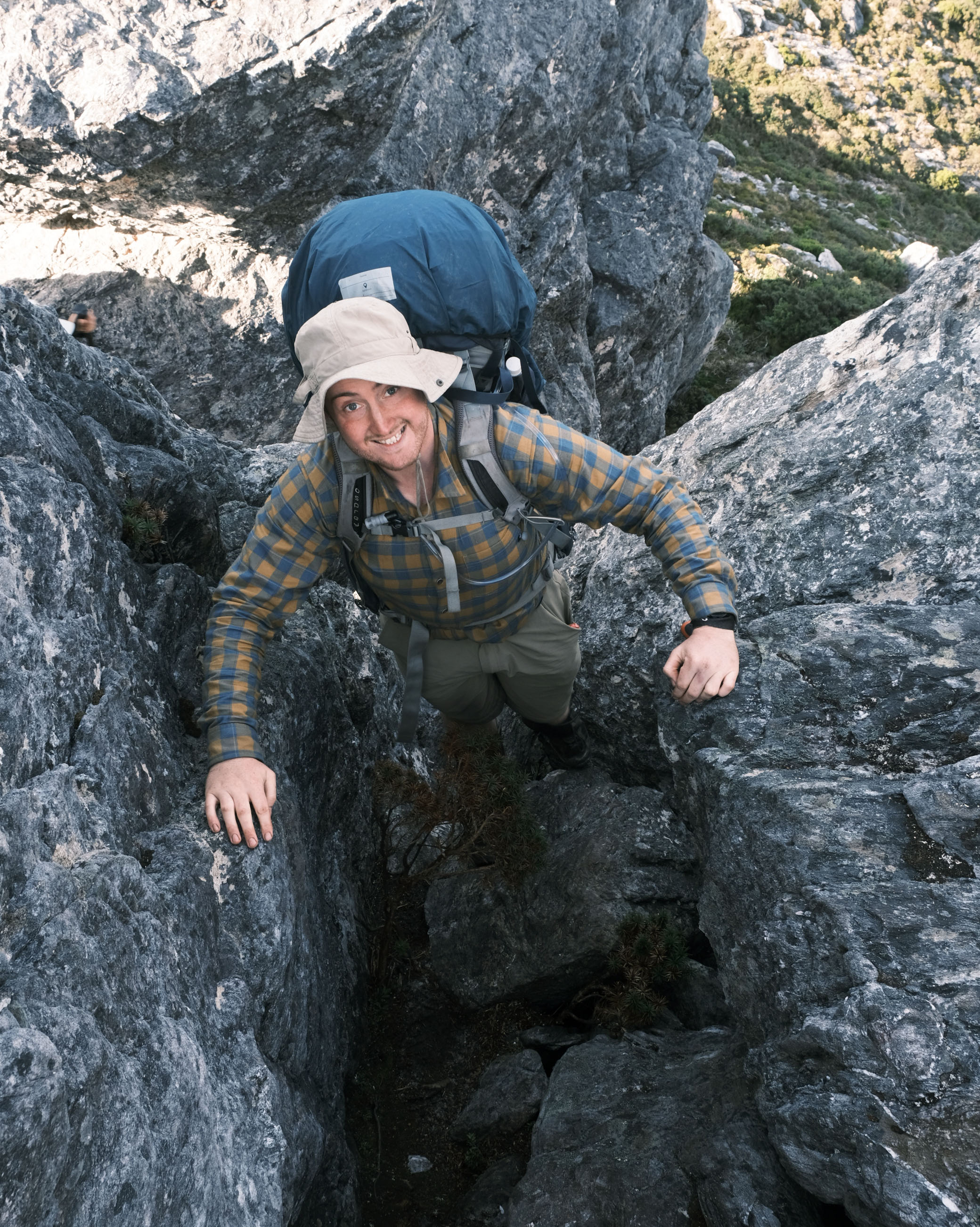

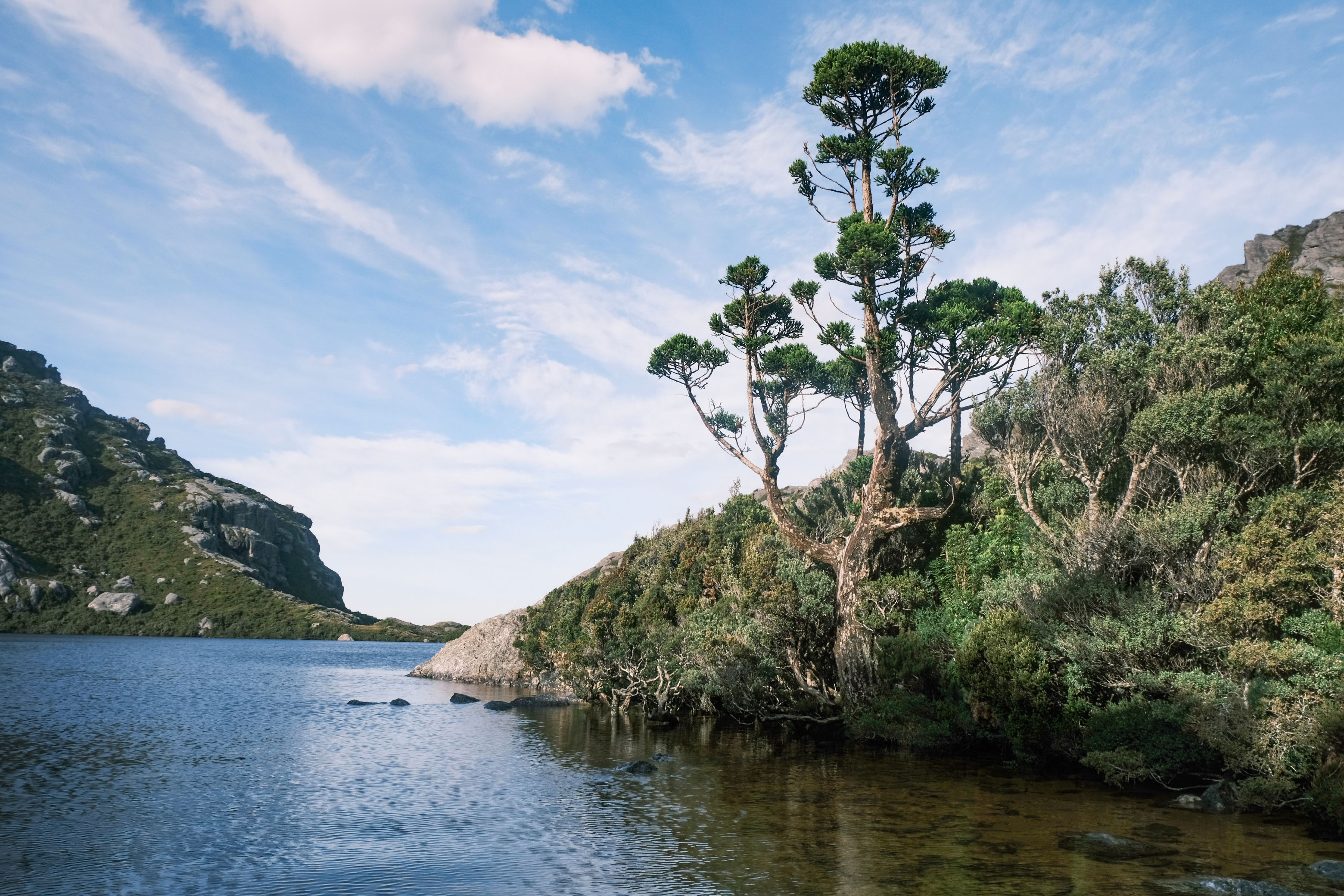


Some of Tasmania's most astoundingly natural sites like the Arthurs Range were promoted not by early frontier settlers but much later by passionate first generation migrants.
The Austrian botanist Gustav Weindofer was captivated by the beauty of Cradle Mountain during a 1909 visit and spent many years tirelessly campaigning for the area to be declared a national park. His rustic Waldheim Chalet (home in the forest) made of hand cut king billy pine charmed early visitors and showcased the region's rugged beauty sans hotel luxuries. Olegas Truchanas emigrated from Lithuania in 1948, initially to escape the political instability of his home country, but he never returned. His expeditions down the Gordon and Serpentine rivers on a canvas kayak, and accompanying slideshows helped many rediscover the extraordinary beauty of Tasmania's South West, known as the 'empty quarter' to many Tasmanians at the time. He campaingned to have the special nature of Tasmania's magnificent rivers and forests recognised over the gains of contructing the Lake Pedder Dam in the 1970s. Later, his protege Peter Dombrovskis showed the world, through his well excecuted large format prints the textures, forms and sheer scale of Tasmania's wilderness, from the mossy forests of the Tarkine to Lake Oberon here.
Like many with new ideas, they were not all successful and some did not see the fruits of their work.
Weindofer's Austrian heritage led him to become more isolated and depressed during and post WWI, with many snow covered winters spent alone after the tourists stopped coming in cooler months. In 1921, a tour to promote his vision for a national park was partially successful resulting in a scenic reserve was established around Cradle Mountain. A national park was not declared until 1947, long after his death. His beloved Waldheim fell into disrepair and was eventually demolished. Olegas Truchanas drowned while on a kayaking expedition raising awareness about what he loved. His body was pulled under by the current of the Gordon River and found by Peter Dombrovskis trapped under a log. After having acheived widespread recognition for his magnificent prints, Dombrovskis died at the age of 51 of a heart attack while photographing the Western Arthurs on this very track in 1996.





Having spent longer on the hike walking into Lake Oberon, we decided to take the easier option to return the same way instead of completing the traverse via Kappa Moraine. Luckily, the better weather made the return hike an entirely different experience for the senses. We even went for a swim in Lake Cygnus (not recommended at this time of year!).




A small detour the way back to Hobart leads to Australia's tallest trees. In the Styx and Florentine Valleys stand many humble giants. Tourist infrastructure here is very scarce, and indeed, a walkway once showcasing the Andromeda stand - a group of 12 90m+ tall trees in very close proximity has simply rotted away. It is widely believed that some specimens of these giants exceeded the height of the tallest Redwoods of today before extensive logging.

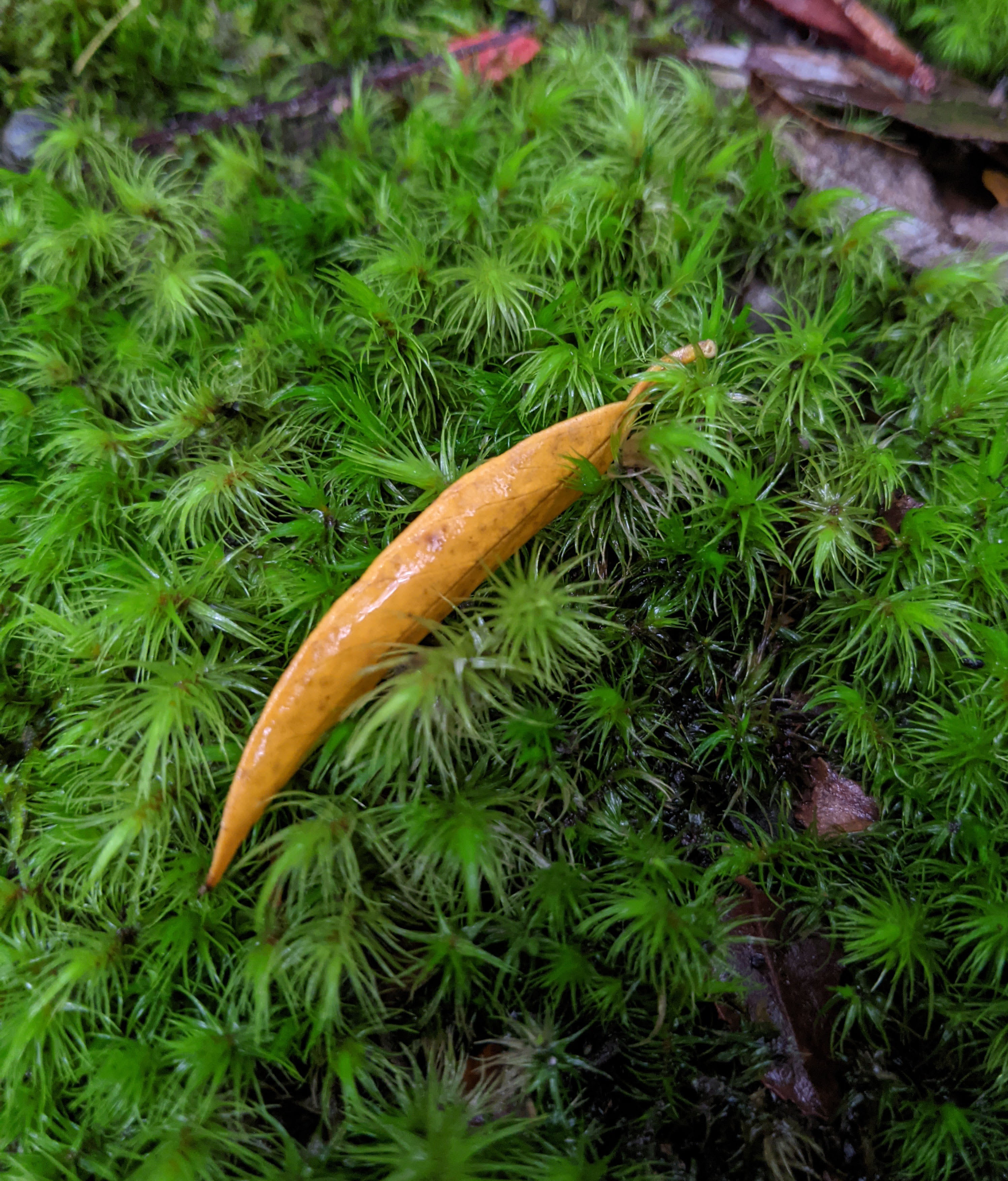

Back in Hobart, we sampled some of Tasmania's finest produce from seafood, honey as well as beers. As the sun set over the old dock, it was hard not to admire the depth of beauty and stories behind amazing domestic destinations, often overlooked if not for covid times.

